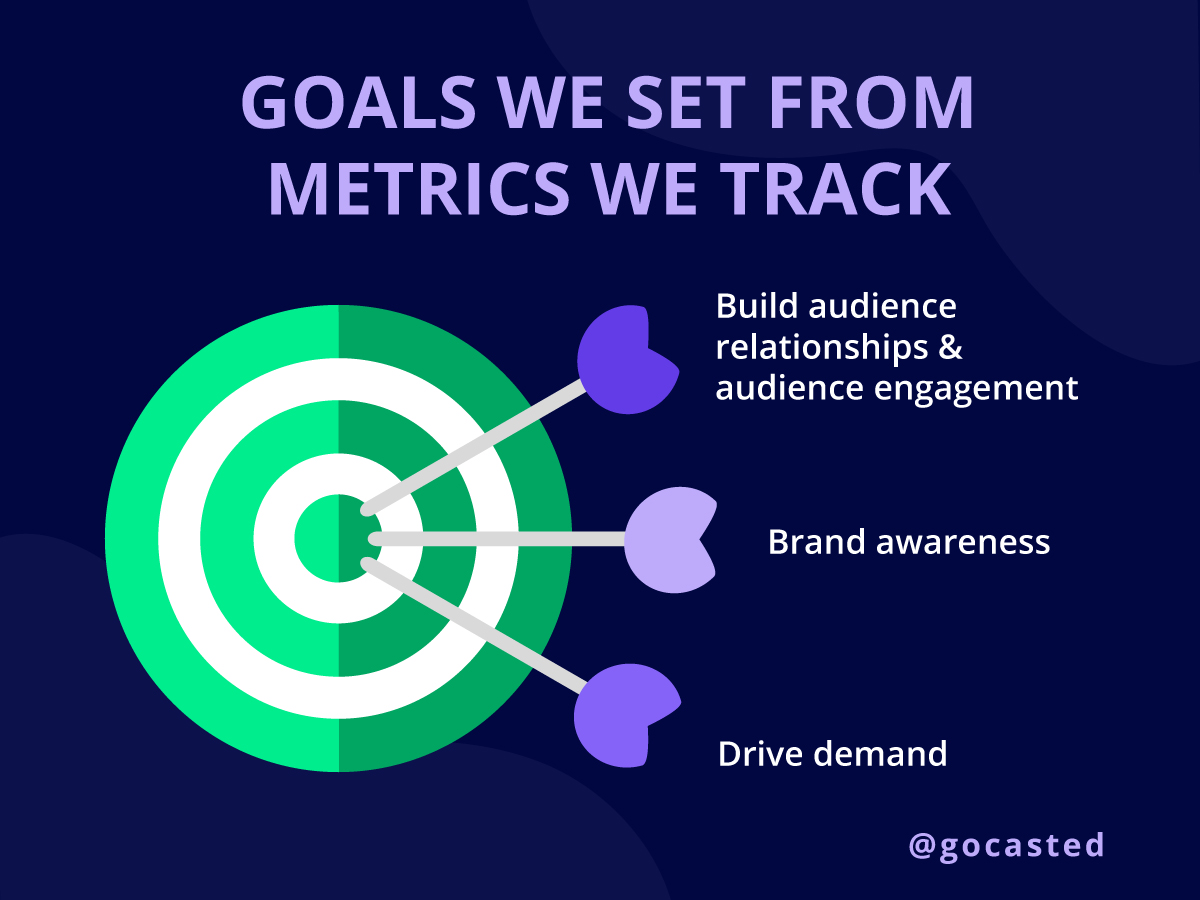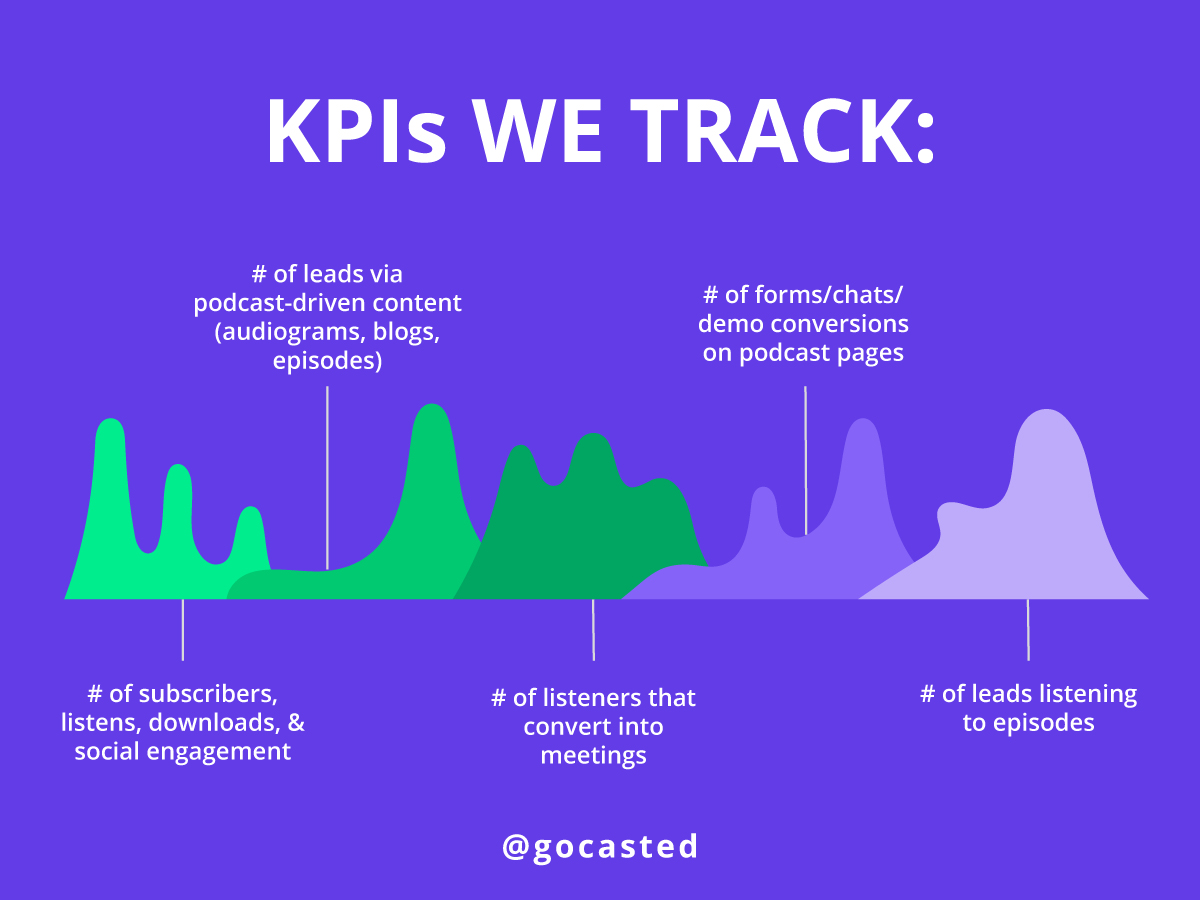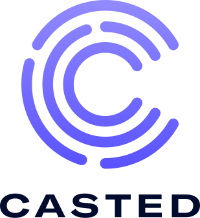You started a B2B podcast, and it’s steadily growing in listens and downloads. Each month, you see more people are consuming your episodes, which means you’re doing something right....right?
Well, not necessarily. Listens and downloads alone aren’t enough to determine whether or not a podcast is successful. As Jay Baer, our very first guest on our podcast, put it: “You can’t pay your employees with downloads.” So the first question shouldn’t be how many listeners you’re getting, but why you started a B2B podcast in the first place.
Was it because you heard how popular they are and how they can grow a brand’s visibility? Well, you’re not alone. You can bet that there are plenty of other B2B marketers who have started podcasts and are a part of the 850,000 active podcasts and 30 million podcast episodes in the world.
But other than brand awareness and visibility – what can we call success? What are your other goals that you’re setting? Odds are one of your goals is to drive more traffic and revenue to your business. And if that’s the case, then you need to be tracking the right metrics.
Stop Treating Your B2B Podcast Like Anything But an Owned Asset
Your B2B podcast is a channel for marketing your brand and authority. But it’s more than that—it’s also a format and medium you can use and measure (like any other content in your marketing strategy). The problem is most ignore this, maybe without realizing it, and treat their podcast like it’s not an essential player in their content marketing strategy.
This is a huge mistake, because B2B podcasts are one of the few pieces that you can really get great metrics from. And the reality is that your podcast could and should be doing so much more for your business than being just another channel to reach your audience.
We’ve also been conditioned to think that podcasts are only for brand awareness, and we have to settle for the information big podcast players allow us to see. But again, podcasting isn’t just a new channel to reach a new audience. It’s a type of content that can be treated just like the rest of your content and serve your brand in the same way.
Think about it. When you started a blog, you didn’t go to a third-party site like Medium and say I’m going to do all of my precious, information-rich blogging here and eventually, maybe it’ll start driving traffic to my site. Nope. You likely started a blog on your own website and maybe used Medium as a channel to republish some of your content and build a bigger audience.
You relied on blogging as an owned channel. A channel you could control, optimize, and use to convert. Medium is a beautiful thing, it can build community, get new eyes in front of your content, and more. But as a business, would you rely on Medium to be the sole location you store your most precious content? Likely no.
So why are we doing that with our podcasts? We’re allowing podcasting players like Apple, Spotify, and Google to control how our content is seen and what information we get out of it. We need to stop treating podcasts as anything but an owned asset. We’re creating this content, so it’s time we start playing by our own rules and further tap into the opportunity that podcasting presents us as brands.
More brands are beginning to see the value in podcasting. Yes for brand awareness (because brand is insanely important), but also as a true asset that can set a brand apart. By publishing your podcast on your own site (via embed or custom landing pages), you have the ability to tap into your podcast metrics and learn a lot more about this content and the people who consume it.
And then, yes, syndicate that content to the major podcast players to grow your audience and give them more ways to listen. The important thing to note though, is that you’re using syndication as channels, instead of as the owner of your own content.
Understand the Potential in B2B Podcasts
I’ve seen a lot of people say that B2B podcasts aren’t for lead gen, that they are solely a brand awareness play. And to that, I say maybe. If you’re only using syndication channels to put your podcast out, then yes, maybe you’re only looking at your podcast as a brand play and a way to grow your audience.
But what if you’re doing more with your podcast? What if you’re hosting your podcast on your own website, creating content, ebooks, and bonus content from your podcast? Well, suddenly, your podcast and the content in your podcast serves a new purpose for your brand. And your podcast could actually help in converting visitors.
My point?
Even if your sole goal of your podcast is to drive brand awareness, there are more indicators available than just downloads and listens that can actually give you more insight into how your podcast is performing and what is resonating best with your audience.
Before you say it, no I’m not thinking about podcasts as a sales tool or a way to pull people further down into the funnel. At Casted, we believe that podcasts are a powerful, yet untapped tool for B2B brands. Podcasts are a conversational asset that offers on-the-go, listen-as-you-want options.
The insights that are uncovered on podcasts are usually from industry experts, internal thought leaders, partners, and even customers. Why wouldn’t you want to take that content and use it across your marketing and business collateral? Brands who are harnessing the power of these conversations are also finding that podcasts are incredibly powerful for building trust and encouraging engagement.
Start Measuring Beyond Downloads and Listens To What Actually Matters
Most podcast players allow you to see things like listens and downloads, but that’s about as far as it goes. There’s more to the story behind listens and downloads. If you take our above advice and look to treat your podcast as an owned channel, you’ll find signals beyond these basic metrics—for instance, SEO spikes and mentions on social media.
Seeing how your audience engages with your podcast, brand, and other content will help you see a clearer picture of your audience and their journey with your brand. It can tell you things like who is listening to your podcast. If you see a lot of your customers are listening, then this could be a golden opportunity.
You can also learn a lot about the listeners’ journey. For instance, you may see a lead listened to 67% of a podcast episode and then read three blog posts. Based on the topic of the episode and the blog posts, you can gain incredible insights about the prospect’s interest and intentions. But this is only possible if you own your podcast by uploading episodes directly to your website.
Imagine being able to map out the typical leads’ journey between your podcast and other content. This will give you the advantage of creating a cycle that guides them from listener to lead to conversion and give you insight into the content, guests, and topics that really resonate with your audience.
How Casted Measures its Podcast Success
At Casted, we position our podcast at the center of our content marketing strategy. We believe in wringing every drop of juice from the podcasts that we create because the information we’re capturing on each episode is incredibly valuable and needs to be shared. This is why you’ll find audiograms, clips of the podcast, email campaigns, blogs, and social media posts, all coming from one podcast episode. But what helps us ensure our podcast is successful is the metrics we track, which are based on the goals we’ve set:
But what helps us ensure our podcast is successful is the metrics we track, which are based on the goals we’ve set:
● Build audience relationships and audience engagement – including looking at podcast content performance, social media engagement , and top audio clips
● Brand awareness – including verbal, social media, and third-party mentions
● Drive demand - including what podcast content leads to a conversion and how our buying cycle and revenue are influenced by podcast listens
 So the KPIs we’re tracking look something like this:
So the KPIs we’re tracking look something like this:
● #of subscribers, listens, downloads, and social engagement
● # of leads via podcast-driven content (audiograms, blogs, episodes)
● # of forms/chats/demo conversions on podcast pages
● Pipeline influenced by podcasts
● # of listeners that convert into meetings
● # of leads listening to episodes (and which episodes) during the buying cycle
With this information, we can continue improving our strategy to meet the goals we set. But this may look a lot different than what you’d do with your B2B podcast. Every business has its own set of goals, and with it, the metrics you’ll need to track.
One thing’s for sure, having a tool to simplify tracking and measuring podcast metrics and attribution is key. This is how we help B2B podcasters with our platform. If you’d like to start measuring the true success of your B2B podcast, then we invite you to schedule a demo with us today!

